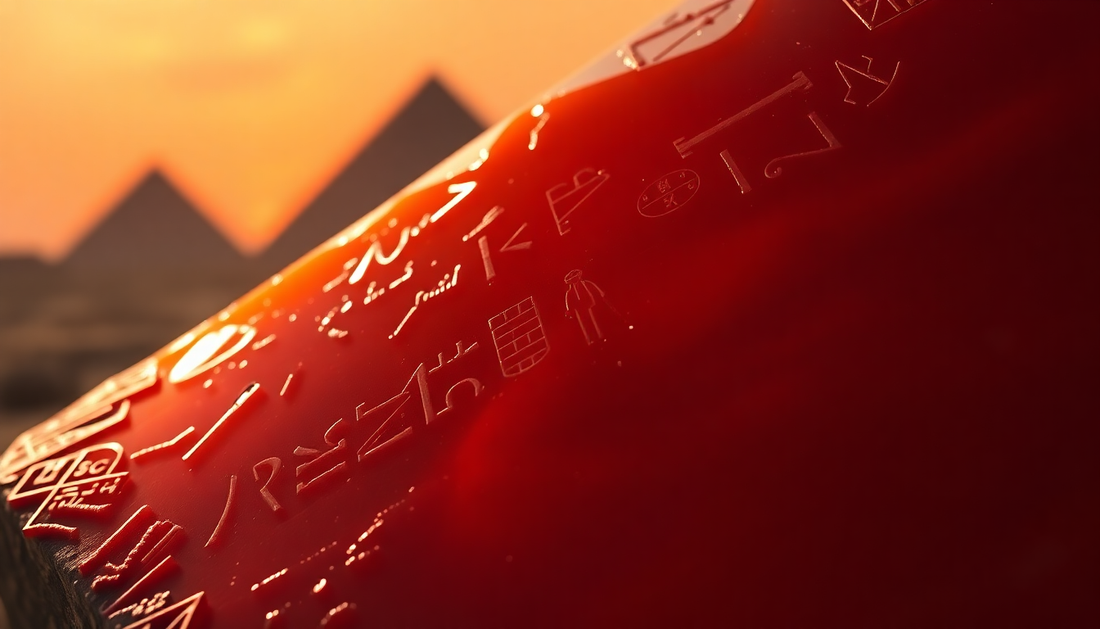
The Fiery Allure of Carnelian: Uncovering the Mystical Secrets of Ancient Egypt
Share
In the heart of the ancient world, where the Nile River carved its way through the desert sands, a captivating gemstone captured the imagination of the Egyptians. This fiery gem, known as carnelian, held a special place in the rich tapestry of Egyptian culture, imbued with a mystical significance that continues to intrigue us to this day.
Carnelian, with its striking hues ranging from deep orange to vibrant red, was revered by the Egyptians as a symbol of vitality, courage, and protection. The ancient Egyptians believed that this gemstone possessed the power to ward off evil spirits and bring good fortune to its wearer. It was not uncommon to find carnelian amulets and talismans adorning the necks and wrists of pharaohs, priests, and commoners alike, each seeking the stone's divine blessings.
One of the most fascinating aspects of carnelian's history in ancient Egypt is its association with the sun god, Ra. The fiery hues of the gemstone were believed to be a reflection of the sun's radiance, and it was often used in the creation of sacred objects and jewelry dedicated to the sun deity. Carnelian beads and pendants were found in the tombs of pharaohs, serving as a tangible connection between the earthly realm and the celestial realm of the gods.
But the significance of carnelian extended beyond its religious symbolism. The ancient Egyptians also recognized the practical applications of this versatile gemstone. Carnelian was used to create seals, scarabs, and other decorative objects, showcasing the skilled craftsmanship of Egyptian artisans. These intricate carvings and engravings not only served as personal adornments but also carried symbolic meanings, conveying the wearer's status, beliefs, and aspirations.
In the realm of ancient Egyptian medicine, carnelian was believed to possess healing properties. The stone was ground into a powder and mixed with various oils and herbs, creating potent remedies that were thought to alleviate a range of ailments, from digestive issues to skin conditions. The Egyptians' deep understanding of the natural world and their reverence for the power of gemstones continue to captivate us, reminding us of the enduring legacy of their ancient civilization.
As we delve deeper into the rich tapestry of carnelian's history in ancient Egypt, we uncover a world of mysticism, symbolism, and the enduring allure of this captivating gemstone. From the grand temples of the pharaohs to the humble homes of the common people, carnelian's fiery presence has left an indelible mark on the cultural and spiritual landscape of this remarkable civilization.
The Fiery Allure of Carnelian
Carnelian, with its striking hues ranging from deep orange to vibrant red, was revered by the ancient Egyptians as a symbol of vitality, courage, and protection. This captivating gemstone held a special place in the rich tapestry of Egyptian culture, imbued with a mystical significance that continues to intrigue us to this day.
Carnelian and the Sun God Ra
The fiery hues of carnelian were believed to be a reflection of the sun's radiance, and the gemstone was often used in the creation of sacred objects and jewelry dedicated to the sun deity, Ra. Carnelian beads and pendants were found in the tombs of pharaohs, serving as a tangible connection between the earthly realm and the celestial realm of the gods.
Practical Applications of Carnelian
The ancient Egyptians recognized the practical applications of this versatile gemstone. Carnelian was used to create seals, scarabs, and other decorative objects, showcasing the skilled craftsmanship of Egyptian artisans. These intricate carvings and engravings not only served as personal adornments but also carried symbolic meanings, conveying the wearer's status, beliefs, and aspirations.
Carnelian in Ancient Egyptian Medicine
In the realm of ancient Egyptian medicine, carnelian was believed to possess healing properties. The stone was ground into a powder and mixed with various oils and herbs, creating potent remedies that were thought to alleviate a range of ailments, from digestive issues to skin conditions. The Egyptians' deep understanding of the natural world and their reverence for the power of gemstones continue to captivate us, reminding us of the enduring legacy of their ancient civilization.